How are Pixar movies made? Discover the behind the scenes action in Barcelona
Unveiling the magic of animation at Cosmocaixa Science Museum
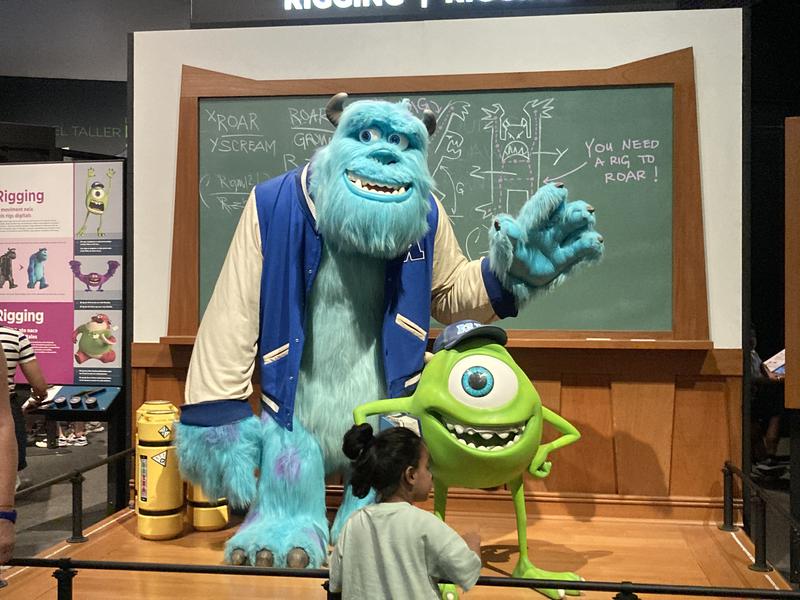
All are welcome to learn about the inner workings of Pixar's most popular movies. Kids at summer camp, families of all ages, and cohorts of older visitors run around the exhibition with the same childlike wonder regardless of age, all excited to delve into the creative process behind the beloved characters and worlds from Pixar's films
The CosmoCaixa Science Museum in Barcelona welcomes an exciting new exhibition that originated in the Museum of Science, Boston. Offering visitors a unique and immersive look into the captivating world of Pixar Animation Studios, "The Science Behind Pixar" exhibition takes place in Spain for the first time after a successful stop at the Experimentarium in Copenhagen.
The exhibition aims to teach audiences of all ages about the underlying applications of science, technology, engineering, and mathematics in Pixar films through fun and interactive games and experiences. "It is really great," Daniela Wicke said about how immersed her 12-year-old son was in the experience, "he is really amazed, he has spent the last 20 minutes playing an interactive game and I just love to see it."
From manual activities putting together models of various movie characters to virtual ones where you can experiment with the movement of Merida's hair from Brave, Pixar combines science, technology, and art in all the activities. This exhibition marks the third collaboration between the "la Caixa" Foundation and Pixar Studios.
"Pixar: 25 Years of Animation" took place in 2015 as a look back at Pixar's groundbreaking work in computer animation over 25 years. This was followed by "Pixar, Building Characters," which focused on the visual design of iconic Pixar characters. Now, "The Science Behind Pixar" takes visitors on an exciting journey through the technical processes used by Pixar's artists and computer scientists.
The exposition is spread out across two floors with eight sections to explore, each dedicated to explaining a specific step in Pixar's technical process:
Modeling: Artists make sketches and then clay sculptures of characters, before creating a virtual 3D model made of digital wireframe structure of points and the edges, showing how mathematical coordinates are used to represent three-dimensional space in computer animation.

Model of Russel from Pixar's 'UP' / Kate Naessens
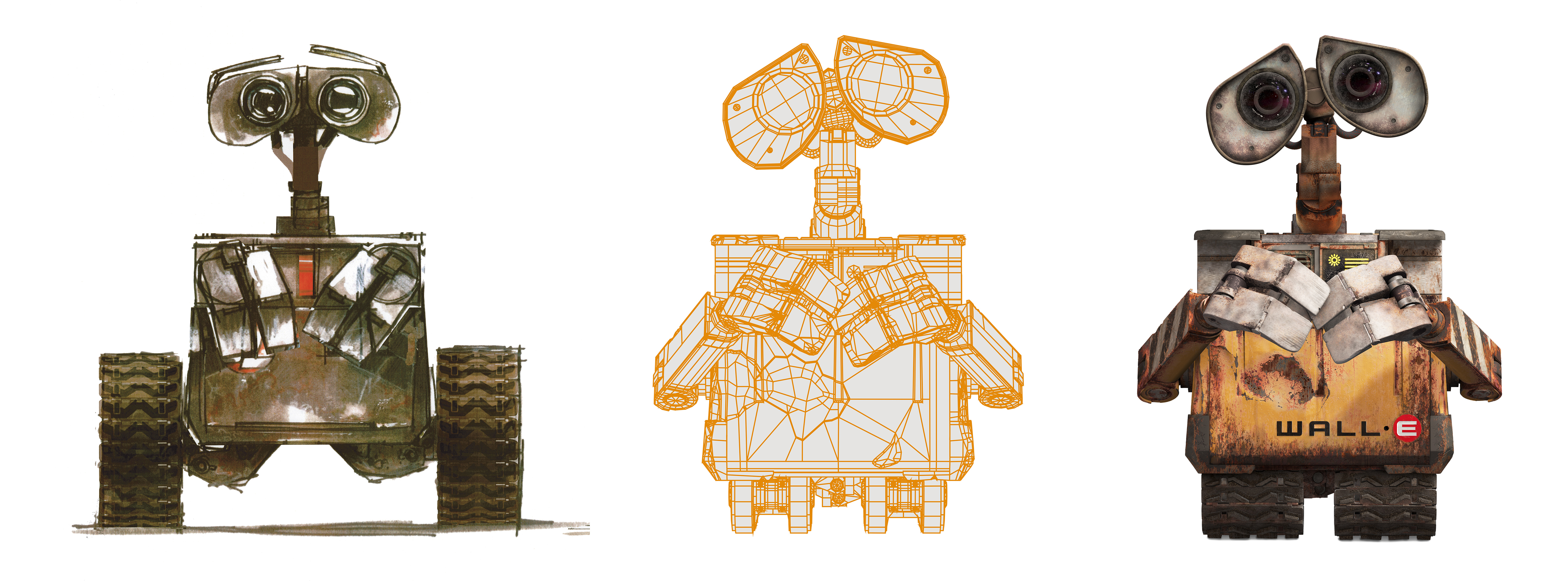
Rigging: The process of developing a character's bones, muscles, and joints for animation, essentially how they are going to move. A life-size Mike Wazowski from Monsters, Inc. in the exhibitions shows off how 7,000 different rig controls are used to make him move the way he does, illustrated by 7,000 marionette strings.
Surfaces: Aside from the shape and build of objects, characters, and settings, animators have another task; to clothe, decorate, and give texture to everything! Visitors at the museum can change the appearance of the characters from the movie Cars to imitate the process of Pixar designers and give their cars different paint jobs, from classic reds and blacks to jellybeans and grass!

Sets & Cameras: Point of view is crucial to storytelling, making camera placement and angles a key step in the animation process. A large tree in the middle of the exhibit allows visitors to see the difference point of view can make by giving them the vantage point of an ant, looking out at the crowd and up at the tree.
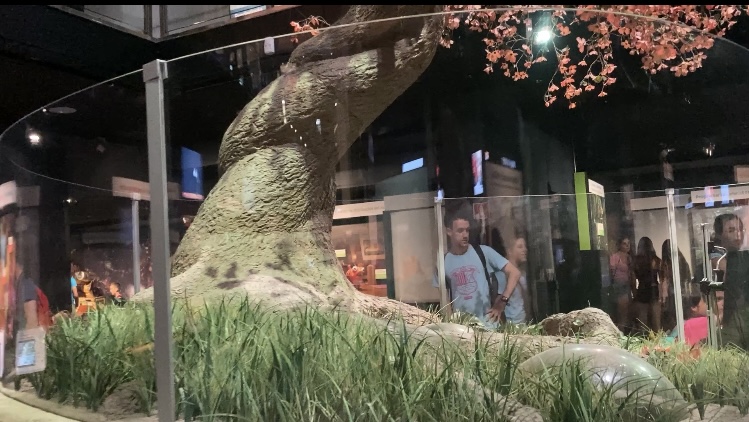

Animation: The process all starts to come together here, where animators take all the previous work and start to piece the story together in an entertaining and visually appealing way. It used to be done by hand as stop motion, which an activity at the exhibit explores.

Simulation: This step breathes life into characters, giving them realistic qualities like hair that flows and fur that moves in the wind. It also addresses natural elements and the way they move, like water flowing down a river.
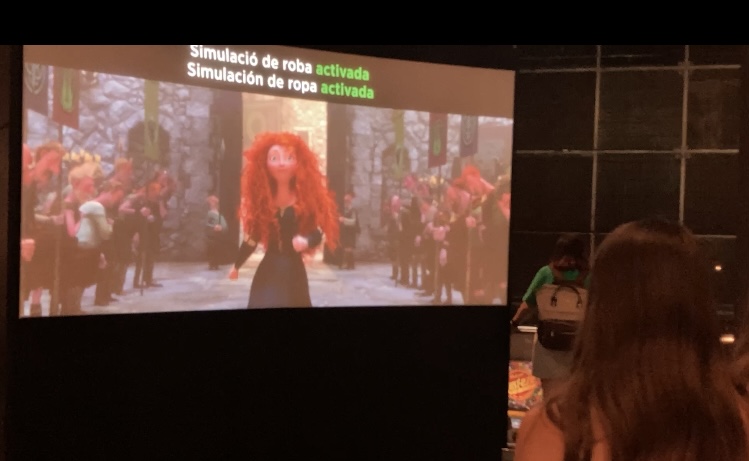
Activity to show Merida's (BRAVE) hair and clothes with and without Simulation / Kate Naessens
Lighting: This section explores how light hits off objects and characters, and how that can affect viewers' emotional reactions to scenes. Analyzing such scenes from the movie 'UP' allows visitors to appreciate how lighting enhances this emotional impact.
Rendering: This final step takes a lot of time, and turns 3D scenes into 2D images. Monsters University took 100 million hours of computer processing (CPU) to render, which is equivalent to 10,000 years for a single computer.
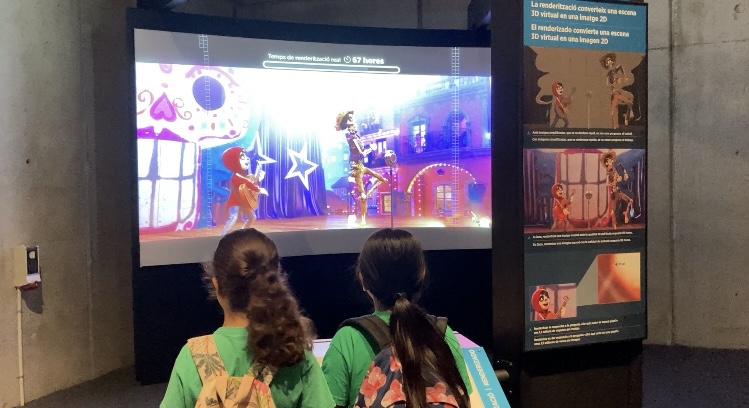
Visitor Zoe Arora was very impressed with these activities, saying they "are so much fun and it makes it so real to see how long it takes. We watch a two-hour movie but there is so much more work behind it, it is amazing."
The exhibits' characters and themes also possess the unique ability to transport visitors back to their childhood while learning. One such visitor was amazed by this element of the exhibit, "you realize that the final result is more difficult to create than it seems, and the aesthetics are so colorful that you immediately get a feeling of nostalgia [here]," she said, "so even though we have never seen the exhibit, everything seems new but like it has been around for years at the same time."
The exhibition will conclude on September 3, with tickets available at the CosmoCaixa Science Museum website.